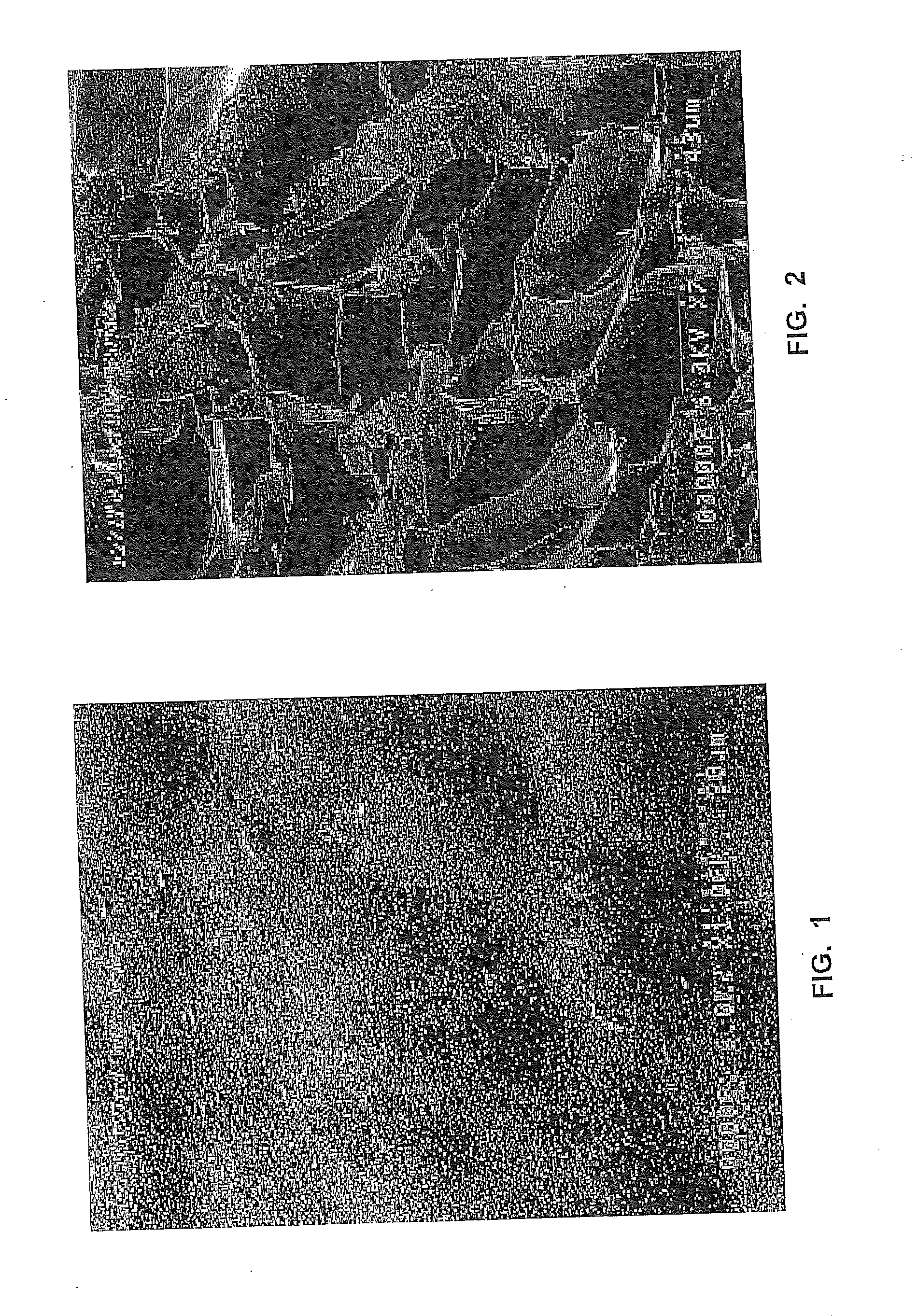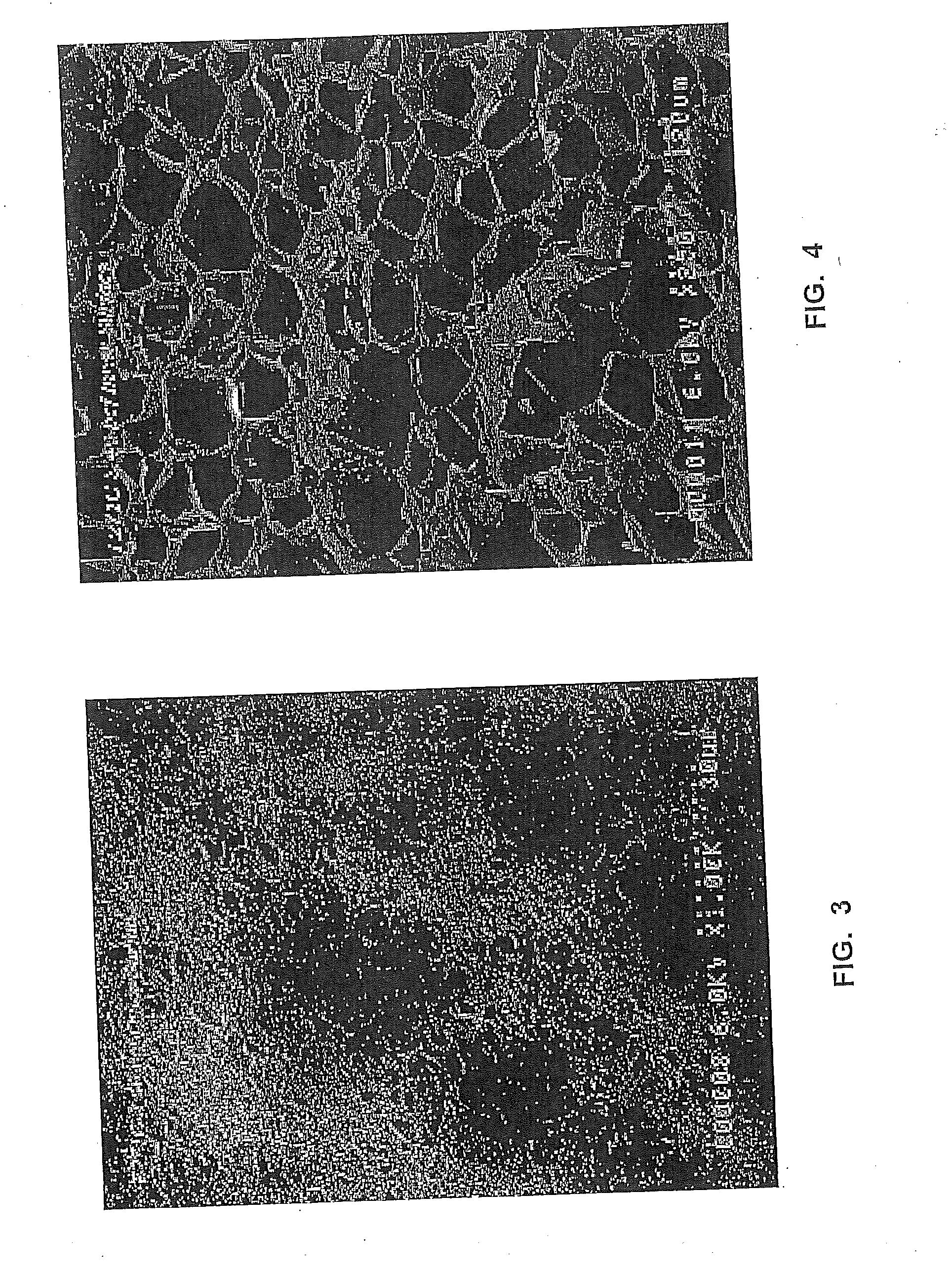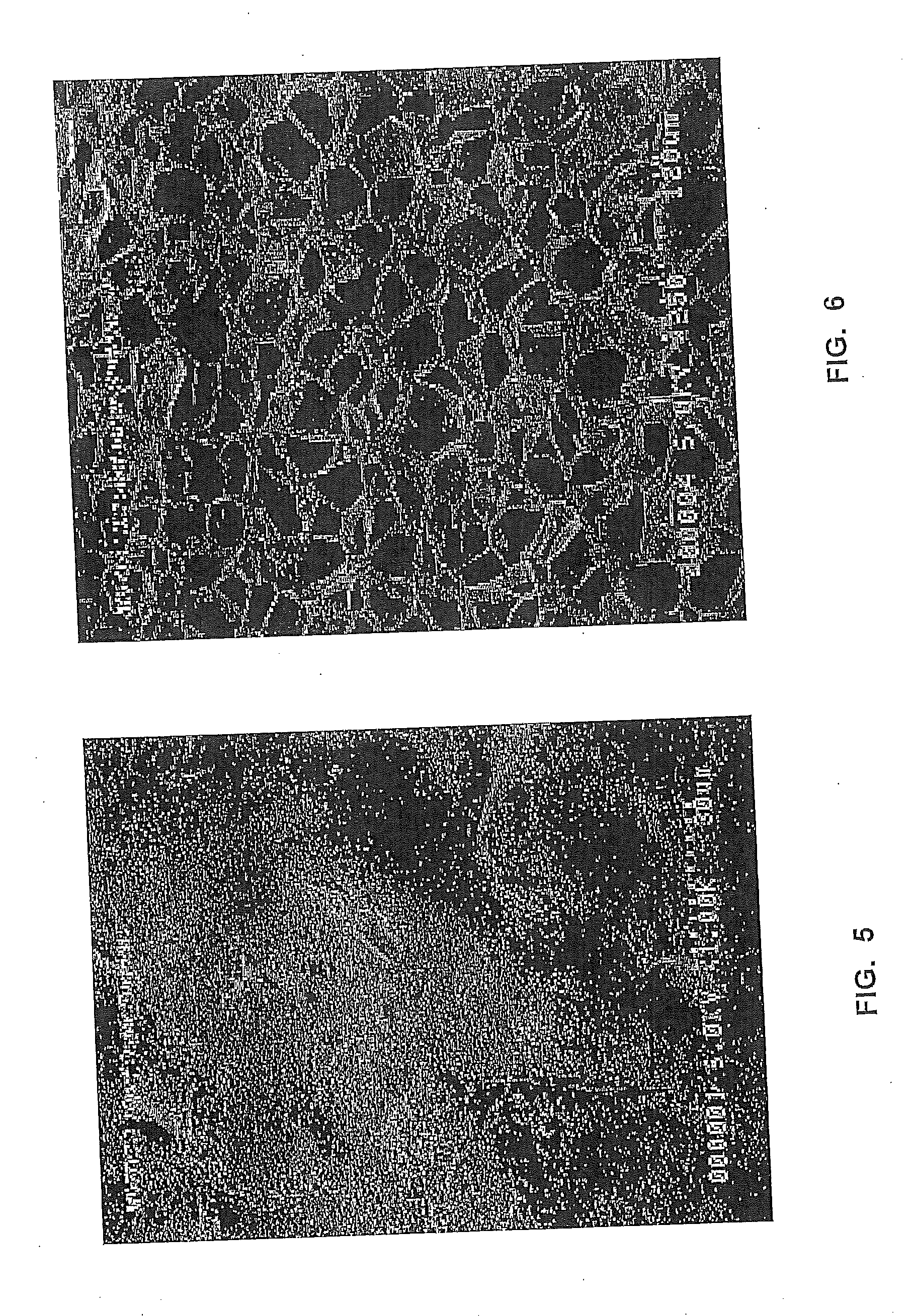Methods for making concrete compositions
- Summary
- Abstract
- Description
- Claims
- Application Information
AI Technical Summary
Problems solved by technology
Method used
Image
Examples
example 1
[0194]Polystyrene in unexpanded bead (Bead) form (M97BC-0.65 mm, F271T-0.4 mm, and F271M-0.33 mm) was pre-expanded into expanded polymer particles (Prepuff Particle) of varying densities and aged for 48 hours at ambient conditions to provide prepuff particles as shown in the table below.
Prepuff ParticleBeadBulkBeadMean Size,Density,Standard deviation,Typeμmlb / ft3Mean Size, μmμmF271M3302.32902144F271M3303.1082480F271M3304.19725103F271T4002.401027176F271T4003.691054137F271T4004.57851141M97BC6502.541705704M97BC6503.291474587M97BC6505.271487584
[0195]The data show that the prepuff particle size generally varies inversely with the expanded density of the material.
example 2
[0196]Polystyrene in unexpanded bead form (0.65 mm, 0.4 mm, and 0.33 mm) was pre-expanded into prepuff particles with a bulk density of 2 lb / ft3 and aged for 48 hours at ambient conditions as shown in the table below. The prepuff particles were formulated into a dispersion of expanded polymer particles in an aqueous cement slurry using a 3.5 cubic foot drum mixer. Portland cement, 46.5 wt. % (25.3 vol. %) and water, 16.3 wt. % (26.3 vol. %) were combined and once homogeneously mixed, 1.2 wt. % (26.4 vol. %) of prepuff particles were added to the mixer. The resulting Dispersion of expanded polymer particles in an aqueous cement slurry had a concrete density of 90 lb / ft2. The average compressive strength (determined according to ASTM C39, seven day break test) is shown in the table below.
PrepuffParticleConcreteBeadBulk Density,Compressive Strength,Mean Size, μmlb / ft3Density, lb / ft3psi6502.009014054002.009018123302.00901521
[0197]The data show that as the mean unexpanded bead size decre...
example 3
[0198]Polystyrene in unexpanded bead form (0.65 mm) was pre-expanded into prepuff particles having varying densities aged for 48 hours at ambient conditions as shown in the table below. The prepuff particles were formulated into a dispersion of expanded polymer particles in an aqueous cement slurry by combining the cement, water and sand in a drum mixer as described above and adding the prepuff particles to the homogeneous mixture. The amount of each component is shown in the table below with each sample having a concrete density of 90 lb / ft3.
Sample ASample BSample CPrepuff Particle Bulk Density1.263.295.37(lb / ft3)Portland Cement, wt. %46.7 (28.5)46.2 (22.1)45.8 (18.9)(vol. %)Water, wt. % (vol. %)16.4 (29.8)16.2 (23) 16.1 (19.7)EPS, wt. % (vol. %) 0.7 (16.8) 1.8 (35.6) 2.6 (44.9)Sand, wt. % (vol. %)36.2 (24.9)35.8 (19.3)35.5 (16.5)
[0199]The following data table numerically depicts the relationship between prepuff density and concrete strength at a constant concrete density of 90 lb...
PUM
| Property | Measurement | Unit |
|---|---|---|
| Length | aaaaa | aaaaa |
| Time | aaaaa | aaaaa |
| Thickness | aaaaa | aaaaa |
Abstract
Description
Claims
Application Information
 Login to View More
Login to View More - R&D
- Intellectual Property
- Life Sciences
- Materials
- Tech Scout
- Unparalleled Data Quality
- Higher Quality Content
- 60% Fewer Hallucinations
Browse by: Latest US Patents, China's latest patents, Technical Efficacy Thesaurus, Application Domain, Technology Topic, Popular Technical Reports.
© 2025 PatSnap. All rights reserved.Legal|Privacy policy|Modern Slavery Act Transparency Statement|Sitemap|About US| Contact US: help@patsnap.com



